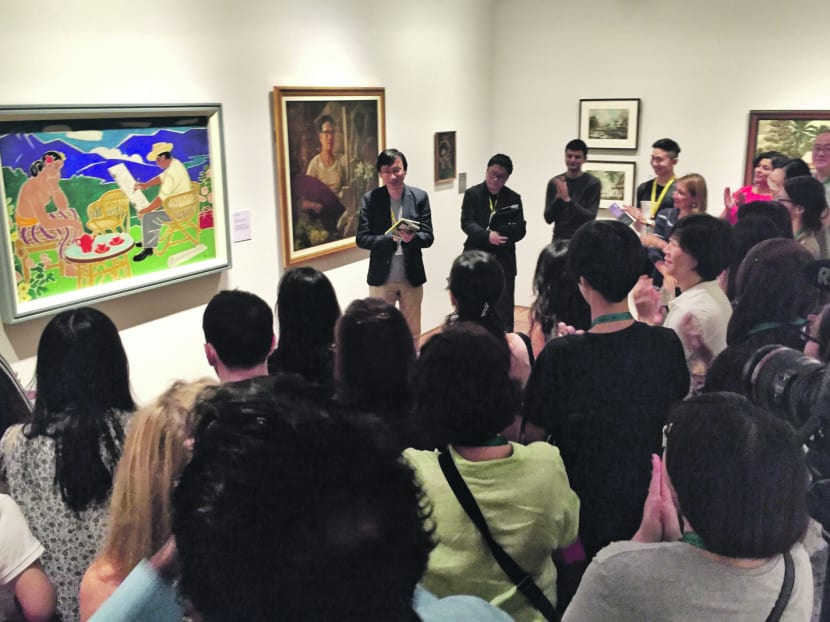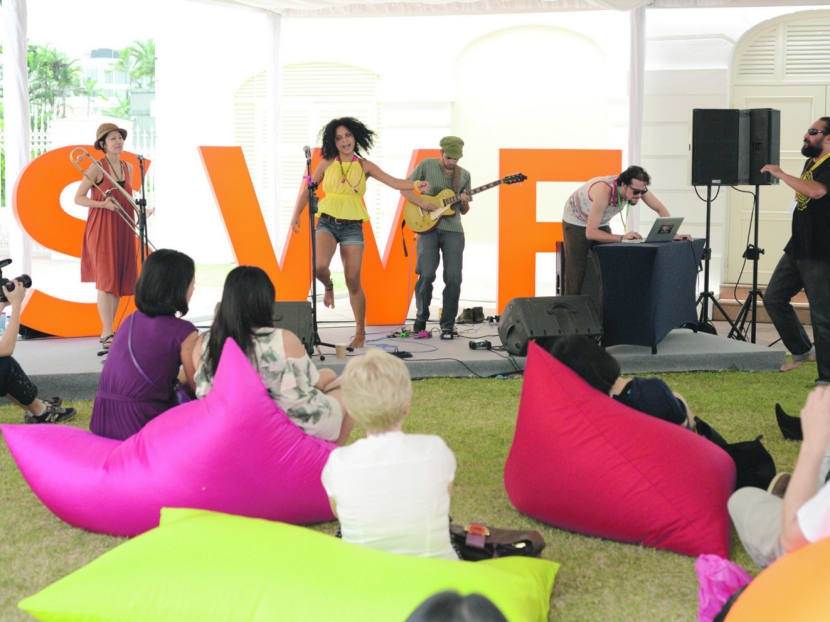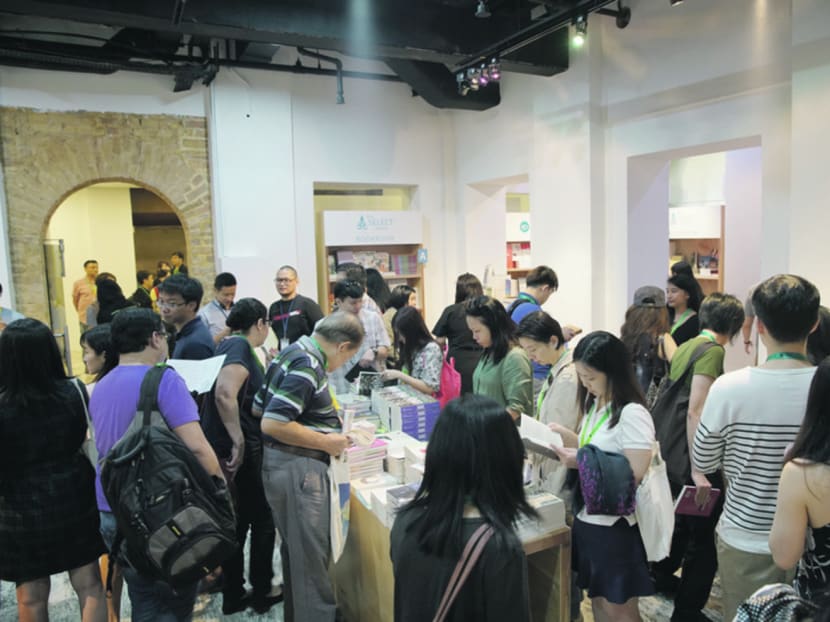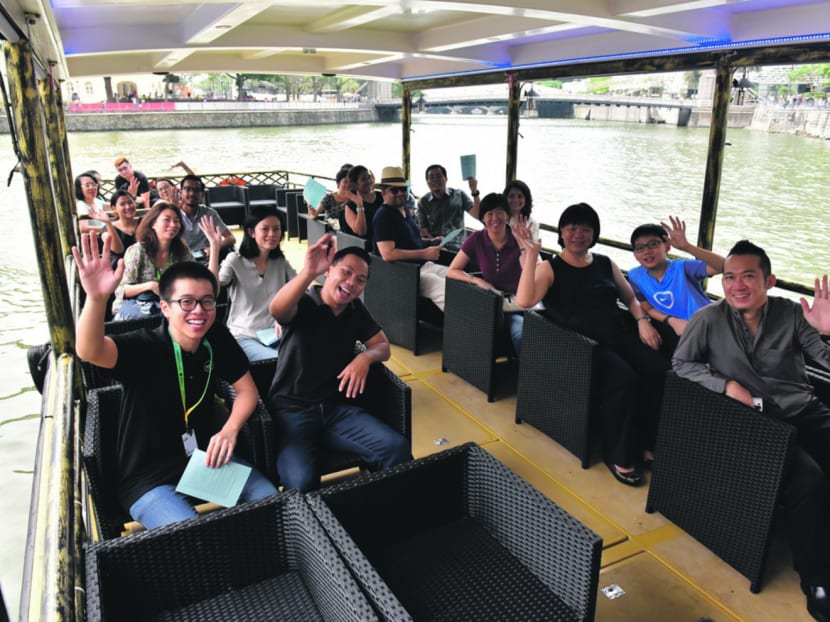S’pore Writers Fest 2015: On revamping to engage the youth
SINGAPORE — The literary scene here is facing a major conundrum: How to pique the youth’s interest in local literary works. This was a challenge mooted by writers and academics on Sunday at a symposium at this year’s Singapore Writers Festival (SWF).




SINGAPORE — The literary scene here is facing a major conundrum: How to pique the youth’s interest in local literary works. This was a challenge mooted by writers and academics on Sunday at a symposium at this year’s Singapore Writers Festival (SWF).
The Singapore Literature Digest — Weaving Together A National Symposium On Singapore Literature was organised to raise awareness among readers and writers about the progress of Singapore literature in each of the four official languages.
All the panelists were unanimous in one thing: Regardless of language, all writers and literary communities would need to adapt to changing times and craft activities and platforms that are more suited to the youths’ preferences instead of relying on the same old methods.
The youngsters are not coming to literary events because they do not write or read as much, noted executive director of the Singapore Centre for Chinese Language Tan Chee Lay, who was one of the panelists. “We can’t just sit (and stare at) the problem, we need to act to try to change this ... we need to be proactive to try and get them (interested),” he said.
For example, he noticed that programmes involving Chinese drama and plays have no problems in drawing more interest. So writers can try to partner with drama groups to organise more interesting programmes, such as writing plays, he suggested.
Minister for Culture, Community and Youth Grace Fu first made mention of a need to appeal to the future generation during the SWF’s official opening on Friday. Singaporeans need their “own Enid Blytons and Roald Dahls, so that our children grow up not just dreaming about jam and scones and tea and snowflakes and chimneys, but of Singapore hawker fare and of our HDB flats”, she said.
Another panelist, Azhar Ibrahim, Visiting Fellow with National University of Singapore’s (NUS) Department of Malay Studies, said that to attract more youths, literary groups have to change their style.
“You have to make literature more fun. Knowing Malay boys and girls, they like music and dramatisation. So you have to introduce poetry via that form,” he said. “If you’re just talking at a forum like this, they will not turn up.”
Another issue of the future of vernacular literature was also raised. How would work from the other three languages fare in a country where its national language is English? While Singapore’s Malay literature does not face as big a threat of extinction given that Singapore is surrounded by Malaysia and Indonesia, it does struggle with the quality of exposure, said Azhar.
“The world is becoming more digital, and reading culture is very low. To find a decent Malay literature book in Singapore is difficult,” he noted, adding that greater support for vernacular literature in schools is needed.
The Chinese literary community is worried as more families here are speaking English at home, said Tan. But with China becoming a more dominant power and the fact that there is an increasing variety of Mandarin programmes and reading material available, they are “cautiously optimistic” that parents will see the benefits of Mandarin and embrace the language.
Meanwhile, the key problem for Tamil literature lies in the quality, said leading Tamil scholar SP Thinnappan, who was also on the panel. While quantity has improved — there is a book launch every week, he said — the “quality is yet to come”.
Still, the panelists remained optimistic about the standing of Singapore literature on the global stage. Some universities in Tamil Nadu prescribe Singapore Tamil literature in their syllabus for undergraduate and postgraduate studies, Thinnappan pointed out, adding that scholars from Tamil Nadu, as well as those from Singapore, have also done research on Tamil literature.
All this signals healthy interest in the area, he said.
Tan acknowledged that Singapore used to be a hub for the publication of Chinese literature, and it was a spot where the literati from China would gather. But that has waned somewhat, she said, adding that Singapore Chinese literature “still has something unique to offer”. Bilingual literature and the concept of flash or mini-novels, which has been the subject of research overseas are some niche areas which Chinese authors here do well in.
As for Singapore English literature, award-winning poet and writer Eric Tinsay Valles said it has gained wider acceptance around the world and some writers have gotten recognition, such as Catherine Lim, Stella Kon, Edwin Thumboo and, recently, Koh Jee Leong. Authors are now evolving away from works that highlight exoticism or stereotypes, such as themes on nonya matriarchs, and writing more about issues and different historical periods, he noted.
“Singapore literature in English is now coming into its own, definitely.” added panelist Chitra Sankaran, who is from NUS’ Department of English Language and Literature. “And it’s being recognised as an important contributor to world literature.” Joy Fang
The Singapore Writers Festival continues until Nov 8. For more info, visit http://www.singaporewritersfestival.com





